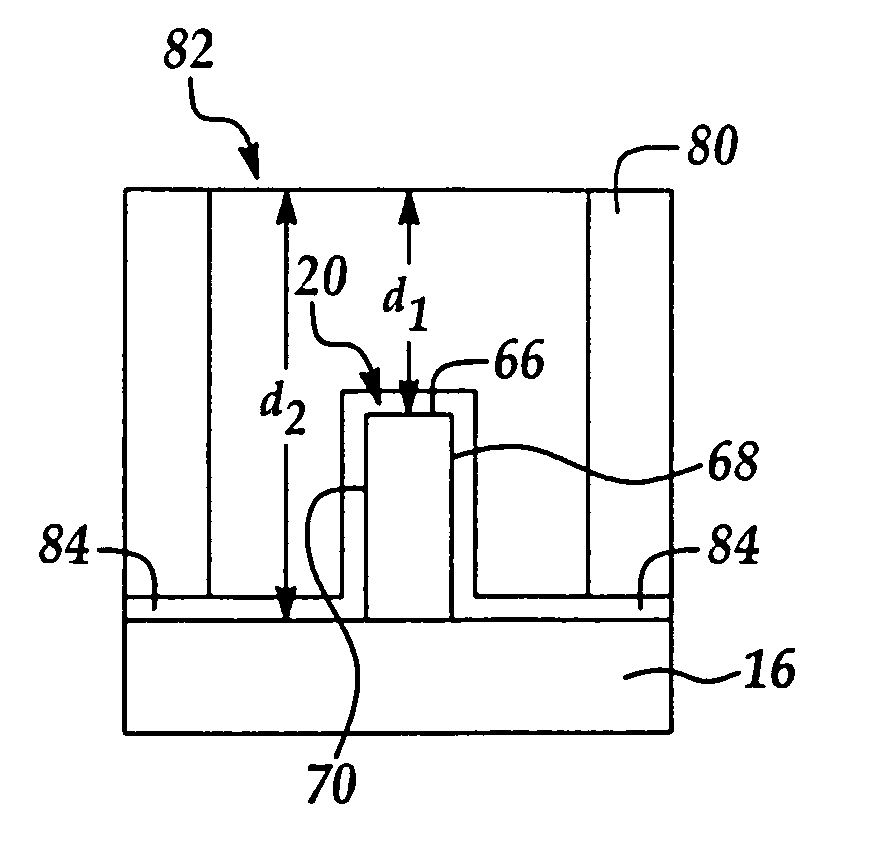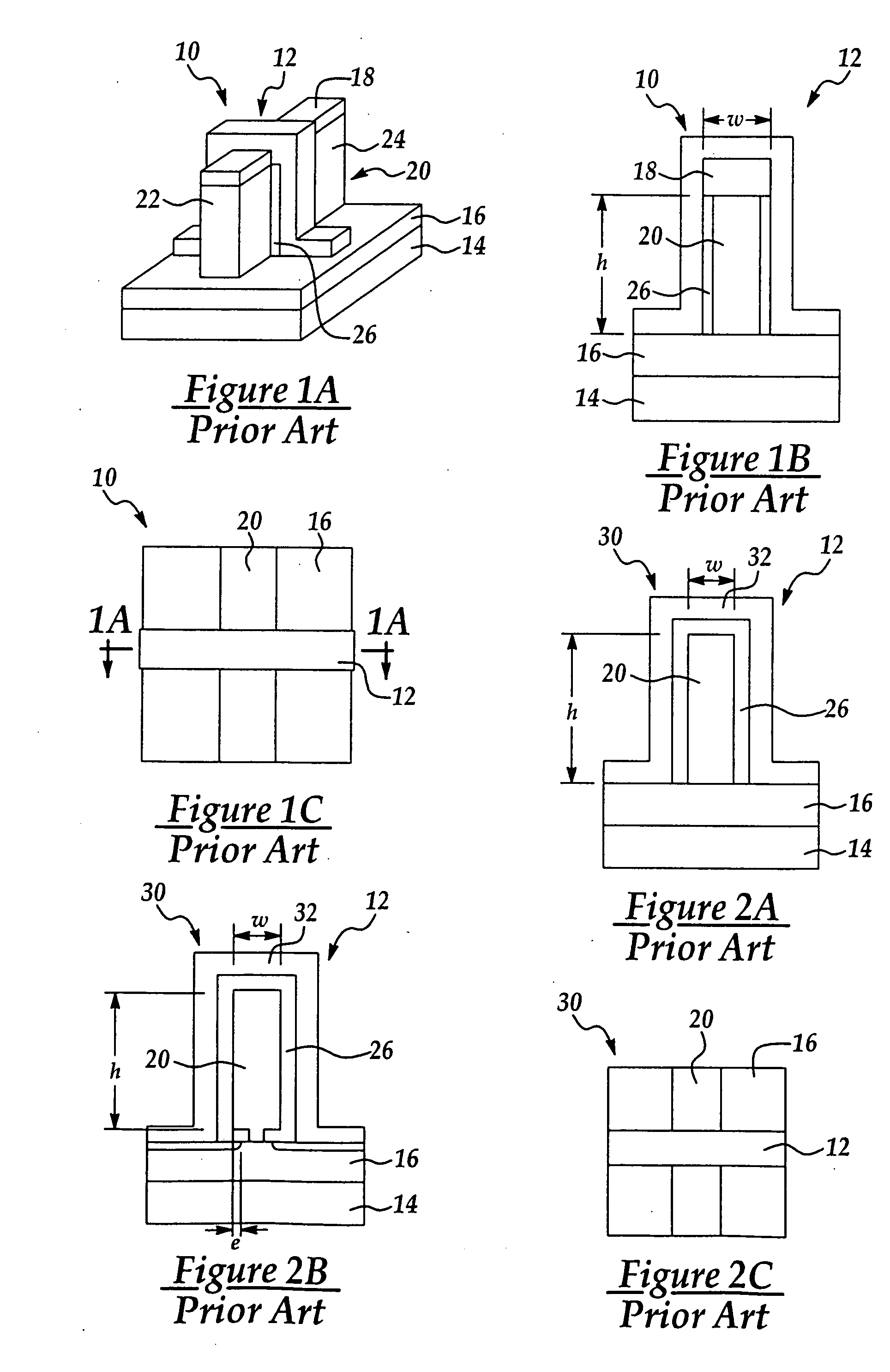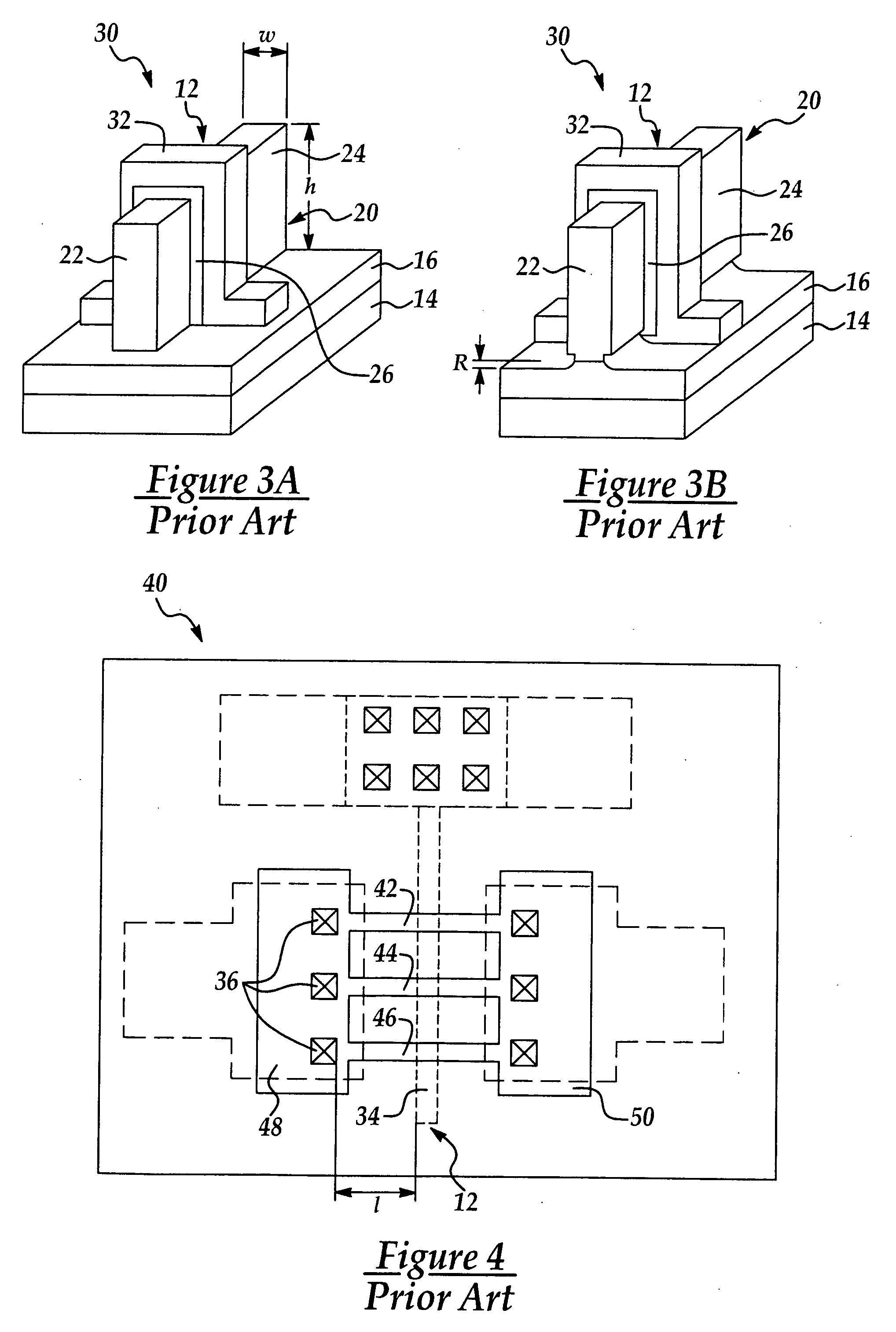Contacts to semiconductor fin devices
a technology of contact and semiconductor fin, which is applied in the direction of semiconductor devices, electrical equipment, transistors, etc., can solve the problems of inability to substantially control the gate, the requirement of body-doping concentration, the thickness of the gate oxide, and the inability to meet the requirements of source/drain (s/d) doping profiles,
- Summary
- Abstract
- Description
- Claims
- Application Information
AI Technical Summary
Benefits of technology
Problems solved by technology
Method used
Image
Examples
Embodiment Construction
[0035] The present invention provides a method of forming a contact to the semiconductor fin with low contact resistance and large contact area.
[0036] The conventional contact scheme may be improved since the contacts may be brought closer to the channel region for reduced series resistance. The series resistance is a function of the distance “1” between the contacts 36 and the transistor channel region 34, as shown in FIG. 4. A shorter distance leads to a lower series resistance. To shorten the distance between contacts and the channel region, contacts can be formed directly on the silicon fins. In act, if contact holes overlap the silicon fins and a contact hole formation process is modified to expose the silicon fins, it is possible that the conductive material makes contact with three surfaces of the fin, i.e. the top surface and the two sidewall surfaces.
[0037] In FIGS. 6A and 6B, a perspective view and a plane view of contacts 60,62 to a semiconductor fin 64 are illustrated,...
PUM
 Login to View More
Login to View More Abstract
Description
Claims
Application Information
 Login to View More
Login to View More - R&D
- Intellectual Property
- Life Sciences
- Materials
- Tech Scout
- Unparalleled Data Quality
- Higher Quality Content
- 60% Fewer Hallucinations
Browse by: Latest US Patents, China's latest patents, Technical Efficacy Thesaurus, Application Domain, Technology Topic, Popular Technical Reports.
© 2025 PatSnap. All rights reserved.Legal|Privacy policy|Modern Slavery Act Transparency Statement|Sitemap|About US| Contact US: help@patsnap.com



